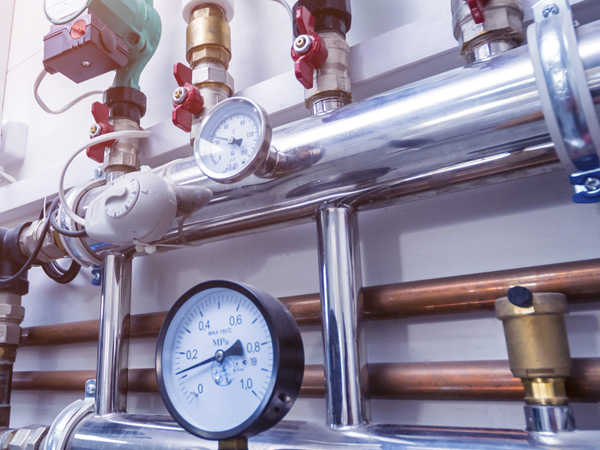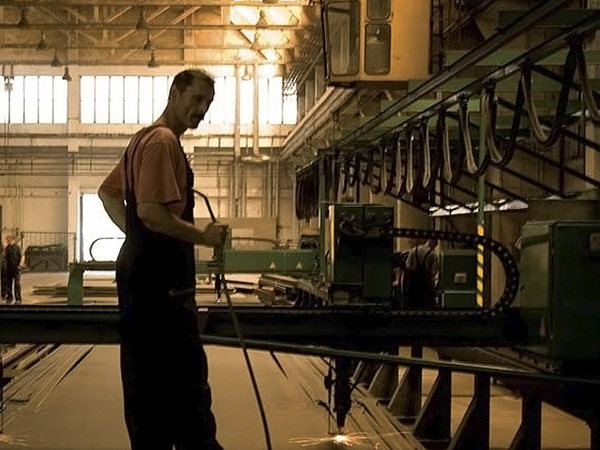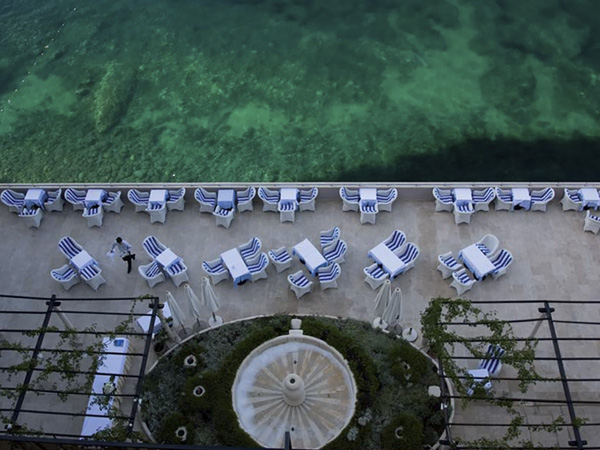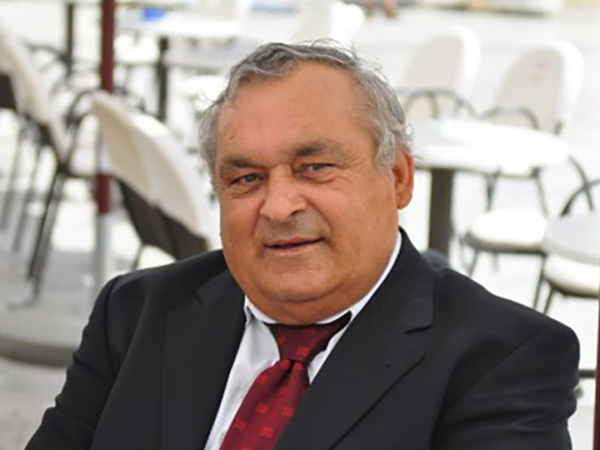Corporate Croatia
overview
Croatia
CROATIA IS MOVING UP THE WORLD FDI TABLES. A PRAGMATIC GOVERNMENT IS ROLLING BACK THE STATE, PRIVATE SECTOR GROWTH IS ACCELERATING AND, SUPPORTED BY A HIGHLY SKILLED WORKFORCE, THE COUNTRY IS TURNING INTO A HUB FOR SOPHISTICATED INVESTMENT.
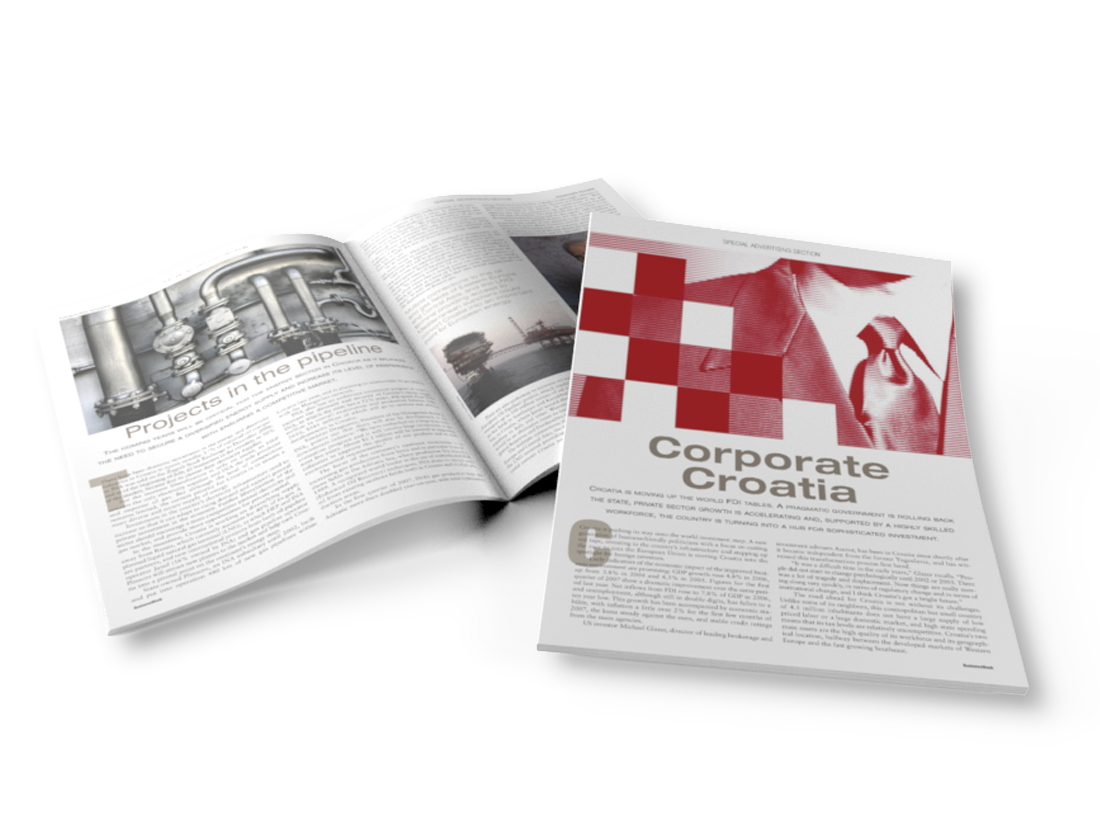
It is the productivity and quality of Croatia’s workforce that will be key to the future success of the strategy to kick start private sector growth and attract foreign investors to value-added businesses. Good quality labor will make Croatia more competitive and, unsurprisingly, education is one of the main areas of reform.
“In order to be competitive against the much stronger economies of Europe, we believe that our main asset will be a knowledge-based society,” Sanader says. “There are a lot of investors who are asking for a specialized and skilled workforce. We are preparing programs in response to the requests of the business community.”

-
read more...
“Croatia does have an educated work force and has an important information/technology sector,” Robert Bradtke, US Ambassador to Croatia, says. “I think this country has the human potential, the human capital.”

The government has also set up a new investment promotion agency, APIU, and a one-stop- shop (hitro.hr) for registering companies.
The reforms are starting to create the desired results, “Today we have one entrepreneur for every 13.”
In order to capitalize on the country’s strategic location, Croatia is also making a major effort to improve its physical infrastructure. Projects are underway to modernize highways and rail- roads and to extend air links. The long coastline and a tradition in shipping mean that ports remain of strategic importance. The World Bank has loaned $156.6 million to modernize the deepwater port of Rijeka for both cargo and passenger transport. The port will have two modern container and cargo terminals and a new passenger terminal. With rail links to Hungary also being modernized, the resulting growth in traffic should consolidate Rijeka as one of the leading ports serving the entire region of Central and Eastern Europe. New terminals are also being built at the port of Ploce.“Croatia is a transit country and will continue to be a transit country for many goods and services in the future,” says Bozidar Kalmeta, Minister of the Sea, Tourism, Transport and Development. “When you also consider the construction projects that we are planning to undertake, then Croatia will be even more interesting.”
However, GDP growth rates of 4-5% are still below the aver- age for the region, and if the administration is to achieve its goal of raising the rates to 6%, it will have to be more aggressive about reducing the state’s role in the economy. High levels of state aid, which prop up underperforming companies, are preventing the economy from hitting top gear. According to the European Com- mission, the government spent around 2.8% of GDP in 2005 in sup- porting state-owned sectors such as shipbuilding, steel, aluminum and railways.
The administration has said it plans to reduce the amount of state aid to 2.1% of GDP in 2007. In May, the World Bank said that since mid-2004 shares in over 841 companies had been sold or sterilized, while the public sector wage bill had been reduced by about one percentage point of GDP.
Furthermore, in a progress report from 2006, the European Commission says that “there is some evidence from available business data that the private sector’s share in output has risen above earlier estimates of 60%.”
Vice Prime Minister Damir Polancec, a high profile Croatian businessman before joining the government, believes that more needs to be done. “The private sector is becoming more and more powerful and more and more important, but we still have too much of our GDP coming from state- owned companies. We have to think about how to speed-up privatization because it is private capital that will increase the competitiveness of those companies.”
articles & interviews
- All
- finance
- energy
- manufacturing
- tourism
- interviews
Finance
The financial sector comes of age
Energy
Projects in the pipeline
Manufacturing
Manufacturing ingenuity
Tourism
A place in the sun
Capt. Ive Mustac
Shipping News
The financial sector comes of age
The financial sector is bringing welcome liquidity to the croatian economy. Most banks are now part of major international groups and the stock exchange is enjoying new-found maturity that is turning it into a major source of financing.

Roberto Motusic, Managing Director of the Zagreb Stock Exchange (ZSE), recalls that just a few years ago it was hard to convince the heads of the largest companies in Croatia to come to the neglected exchange for even the simplest administrative procedures.
“Some top companies never came to here to sign documents, to present results,” Motusic says.
“It was shameful.”
A lot has changed since then. The ZSE has taken over its local rival, moved into lavish new headquarters, and installed a state-of- the-art trading platform supplied by OMX. Companies are now lining up to list shares and raise capital on the market.
Croatia’s financial sector is regarded as the strongest in South- eastern Europe, with most major banks now part of larger international groups, and the ZSE is emerging as the financing hub for the region.
-
read more...
The rise in share prices and volumes reflected fundamental changes, according to Milan Horvat, President of the Management Board of FIMA, Croatia’s largest equity brokers and asset managers. “As the investors detected opportunities, a substantial supply of money entered the market, both from investment funds and private individuals,” Horvat says. “There are two kinds of investors, the real ones and the speculative ones. Last year there was no difference. Today speculative investors have left, only a few are still here managing high risks...There is no bubble.”
Michael Glazer, the American director of brokerage and financial advisory company Auctor, says that although these huge IPOs will help liquidity, it is lower profile offerings that will drive the development of the market: “Croatia suffers from a lack of heavily traded shares. It can only cure this by becoming an incubator for medium-sized local business. The ultimate source of income on the exchange is going to be medium-size enterprises which will eventually grow to larger-size enterprises. That sort of thing will carry the exchange into the future.”
Horvat says that Croatian companies are now increasingly attracted by the possibility of raising finance in capital markets, and says: “I expect an increased number of IPOs over the next few years. I also expect an increase in corporate bond issuance and further development of trading of such securities.”

Market participants say that Croatian companies, which used to favor bank financing both because of regulatory advantages enjoyed by the banks and because of some lack of transparency at companies, are now turning to the capital markets as an alternative source of financing. “We already have information that two or three bigger Croatian privately- owned companies want to go public, because now they realize that the market is here, that they can get proper valuation at the capital market, that this market can accept all volumes,” says Motusic. “Now is the time for the privately-owned companies to go public.”
ZSE’s recent takeover of the Varazdin Stock Exchange (VSE) the second, smaller exchange in Croatia, has led to a more liquid market, which is of greater appeal to international investors. US clients already account for 20-40% of FIMA’s trading volume, Horvat says, thanks to the role played by the brokerage’s partner in New York, Auerbach Grayson. “You will see a lot of Croatian managers who don’t understand the quality of companies because they only have eyes for local issues,” says Horvat. “But when you see Croatia from NY, that’s when you can make a good evaluation. We also send expertise [to our partners] from here, to support their research and analysis showing the opportunities in Croatia.”
Participants in the capital markets say that, in addition to more companies listing in the exchange to increase liquidity and international exposure, more diversified sources of capital are required. In order to attract this capital, the trading platform provided by OMX will also allow derivatives trading. Motusic now wants US hedge funds to come in and help develop the market: “We need the venture capital to take risks, to roll the market and, of course, later on to exit. And this is something the US investors can do. They can really participate because they have the know-how. I think investors in Europe are more conservative than the ones in the US.”
As the banking sector matures, an increasingly varied and sophisticated range of financial services is helping support the much needed expansion of private sector investment in the country. “One of our pillars is the development of the private sector culture,” says Bozo Prka, President of the Board of Croatia’s largest financial group, PBZ, “and providing funding, opportunities and advisory services to the growing SME sector.”

www.fima.com
Projects in the pipeline
The coming years will be critical for the energy sector in Croatia as it balances the need to secure a diversified energy supply and increase its level of independence with ensuring a competitive market.
There have been dramatic movements in the energy and electricity industries in Croatia. For the moment liberalization is only on paper, as HEP remains the only electricity supplier and INA the sole producer and importer of gas. But although the level of competition remains limited, the current priority for Croatia is to ensure a more diverse and secure supply of energy.
Investments in the country’s electricity infrastructure need to increase so that it can adapt to rising demand and support general private investment in the economy.
Further liberalization of the sector should encourage a more competitive internal electricity and gas market, and provide more opportunities for private capital.
In the meantime, Croatia is working on diversifying supply away from Russia, which currently accounts for 40% of its gas.
A planned liquid natural gas terminal (LNG), in which HEP and INA are partners, and new international projects from both oil pipeline operator Janaf (16% owned by INA) and gas pipeline operator Plinacro will attract new players to the market and help turn Croatia into a pivotal point on the continent’s energy map.

-
read more...
State-owned Plinacro, built and put into operation 480 km of new gas pipelines within Croatia last year, and is planning to interconnect its gas pipeline with the Hungarian network. INA also has an ambitious investment program in order to increase the diversity and security of Croatia’s energy supply.
Tomislav Dragicevic, President of the Management Board of INA, points out that there will also be developments in the downstream industry: “We have embarked on a large-scale modernization program and it will involve huge investments in the next five years. About $1.1 billion will be invested in upgrading refineries to improve the quality of our products and to meet environmental requirements.”
The focus of the company’s upstream investments is on increasing gas production from Syria and in particular from off- shore fields in the Adriatic Sea, where production first started in 1999. A recognized world leader in the use of sophisticated EOR (Enhanced Oil Recovery) techniques, INA plans to extract more oil from existing onshore fields both in Croatia and in other pro- duction areas.In addition to the Adriatic Sea and Syria, INA produces oil in Egypt and Angola, and it is also exploring in Namibia. “We expect growth in oil and gas production of around 10% annually,” Dragicevic forecasts. Although INA is currently the only producer and importer of gas in Croatia, new pipelines are planned to bring in other suppliers of gas, and the construction of the LNG terminal will also help to fulfill the aim of diversifying energy supply away from Russian gas.
“In the future, when the LNG terminal is constructed, we can ensure access to natural gas from other producers in the Mediterranean like Algeria, Qatar, Egypt,” Dragicevic says.
HEP and INA will be partners in the LNG terminal consortium and in new gas pipeline projects. Ivan Mravak, President of the Management Board of HEP, agrees with Dragicevic about the potential impact of the planned pipelines and of the new terminal. “Its capacity would be 10 to 15 billion cubic meters of gas, which means that it would cover not only Croatia’s needs, which are today at a level of 3 billion cubic meters, but much more,” he says. Mravak adds that this would significantly cut the dependence on Russian gas.
Multiple connections to the oil and gas fields of Eastern Europe and Central Asia, and the LNG terminal providing access to Mediterranean suppliers could convert Croatia into an important point for European energy.
Plans are also underway to increase oil supply. The PEOP (Pan European Oil Pipeline) project, which could cost $4 billion, would transport up to 100 million tonnes of oil annually from the Caspi- an Sea fields in Azerbaijan and Kazakhstan, via Romania and Ser- bia, to Croatia, where Janaf would then transport the oil over its pipelines to Italy and other Western European markets.
PEOP would be an alternative route to tankers passing through the con- gested Bosporus and Dardanelles straits.
The multiple connections to the oil and gas fields of Eastern Europe and Central Asia, the existing oil terminal in Omisalj and the LNG terminal providing access to Mediterranean suppliers could convert Croatia into an important point for European energy. Pipelines from the Port of Rijeka would supply refineries in neighboring countries such as Italy, Slovenia and Hungary.
“With the LNG terminal in the Adriatic, the construction of the gas pipeline that will be connected to the markets in Central Europe and the new oil pipeline route that should also go to Trieste, Croa- tia would become the energy hub for the region,” adds Dragicevic.
These various pipeline projects will also be a key element in increasing the supply of raw materials to the country’s expanding network of power plants. Croatia’s need for more electricity infra- structure is becoming acute, as economic growth picks up.
“Our calculations are that in the next decade the increase in consumption will be between 3.5% and 4% annually,” says HEP’s Mravak.
“In 2006 we were at a level of 16.5 TWh of electric power consumption. In 2020 we expect to be at the level of 27 TWh.”
HEP has a 1.96 billion euro (approximately $2.66 billion) plan for new investments in power system facilities between 2006-2013, and the financing of this program will require joint ventures with private capital.
In the electricity market, an over- head transmission line to Hungary and an underwater electricity cable to Italy will also play key roles.
The company currently has total installed capacity of over 4000 MW, of which about half is derived from hydro power plants.
This proportion of hydroelectricity is one of the highest in the world, providing Croatian industry and consumers with cheap, renewable power.
INA is further along the road to private control, following the acquisition in November 2003 by Hungarian oil company MOL of 25%. The Croatian War Veteran’s Fund has another 7%.
The sale of a 17% stake on the Zagreb Stock Exchange in December 2006 will be followed by a sale of 7% to INA employ- ees this year, cutting the state’s holding to 44% from 51% now.
With the government planning to retain a 25% stake by the time Croatia enters the EU, 19% will be available for sale, either to a strategic partner or in a public offering.

There will be a role for private and foreign capital to set up wind farms and invest in renewable energy through joint ventures with HEP.
Mravak is optimistic about the outlook for HEP in a compet- itive market, noting the compa- ny’s recent financial performance in challenging circumstances:
“In the last couple of years, by reducing operational costs and the number of employees, we managed to achieve a positive result in spite of the significant growth of raw material prices.”
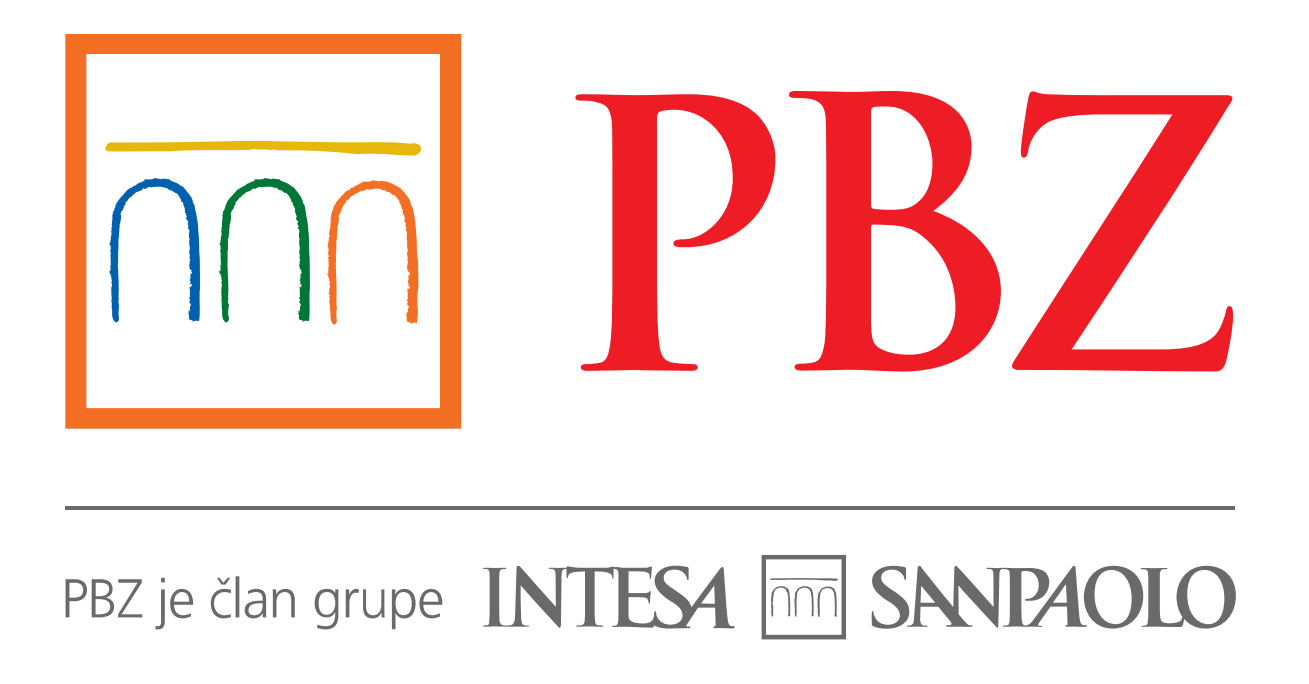
www.pbz.hr
Manufacturing ingenuity

CROATIA HAS A STRONG REPUTATION FOR INDUSTRIAL INNOVATION AND KNOW-HOW IN A RANGE OF INDUSTRIES. PRIVATE FOREIGN CAPITAL WILL HELP LOCAL MANUFACTURERS BECOME GLOBALLY COMPETITIVE IN SPECIALIST NICHES.
The fountain pen, the common form of the electric light bulb and the first self-propelled torpedo are all the result of Croatian manufacturing ingenuity.
However, the world has moved on from these items, and Croatia is moving with it. Local industrialists accept that they can- not be competitive in mass-produced commodity products. The state-owned and private manufacturing sectors are now focused on investing heavily in modernizing their production base in specialist niches, and on actively looking for international partners and strategic investors who can help them leverage Croatian know- how and expertise in global markets.
In the defense industry, companies which increased their expertise during the war of 1991-1995 have now carved out a role for themselves in the global market. “Some of these companies reduced their capacity after the war,” Defense Minister Berislav Roncevic says, “but a smaller number of them have restructured, adopted new technologies, and entered world markets as strong competitors".
“Some of the small, private companies that used to be workshops at the beginning of the war have reached a global level of quality for their products.”
-
read more...

Sestan-Busch produces combat helmets for the German, French, and Dutch armies, and is tendering for large US military contracts, while small arms manufacturer HS Produkt produces the XD range of semi-automatic pistols sold by Springfield Armory in the US.
The national defense industry also has a strong tradition in heavy armor. Duro Dakovic Special Vehicles, one of the eight sub- sidiary companies of holding Duro Dakovic, exported 149 of its M84 Degman tanks, a modernised version of the Soviet T72, to Kuwait before the Iraqi invasion in 1990. It is now negotiating with Kuwait for the modernization of those vehicles and an order for a new model of the Degman.
Zdravko Stipetic, President of Duro Dakovic Holding, explains how the company is now actively seeking to integrate some of its subsidiaries within larger companies, to make them more eco nomically viable: in 2005, it sold its combine harvester business to Italian tractor giant Same Deutz-Fahr, which is now leveraging Croatian know-how and skill to serve the important agricultural market of Southeastern Europe. “The new owners recognized the quality of workmanship that we could offer, and they have made our former company into their center of excellence for the whole group,” says Stipetic.Duro Dakovic, which is 72% owned by the state, will apply the same strategy to the largest of the eight companies in the hold- ing: Montaza specializes in steel construction and bridge building and accounts for 50% of the holding company’s revenues. “We want to ensure that this sale will guarantee adequate markets for the capacity of companies for which the Croatian market is not big enough,” Stipetic explains.
The holding will use resources raised from the sale of these companies to invest in new sectors, and Stipetic says that potential joint venture partners are already lining up to create companies in innovation-based areas such as renewable energy.Since the end of the war, Duro Dakovic Special Vehicles, which provides 20% of the holding’s revenue, has focused increasingly on civilian industries, such as rolling stock for railroads. Bartol Jerkovic, President of the subsidiary, says that “it was difficult in the nineties to start again with the non-defense program. The railroad business represents a major opportunity for Duro Dakovic Special Vehicles, with old rolling stock being replaced across Europe. But the company has had only limited success in placing its wagons in international markets. The current strategy of the company in this sector casts light on some of the challenges faced by Croatian manufacturing and by the wider economy: because of the relatively high costs compared to some neighboring countries, Croatian companies have to compete in quality niche markets where they can add value and provide their customers with flexible, custom-made service.
“There are companies in Poland, Slovakia, Romania, which are huge. Definitely, this is why we decided not to compete in quantity, but in quality,” Jerkovic at Duro Dakovic Special Vehicles says. The company is not aiming at the mass market, but at specific niches where it can differentiate more and be more competitive. “The idea is not to produce just any model of any wagon, in any country, in any quantity,” he explains. Gredelj, a subsidiary of state-owned Croatian Railways, is facing similar challenges. Antun Fabek, Chairman of the Board of Directors, says the company has not been able to compete in inter- national tenders with market leaders such as Siemens and Bombardier:
“We are not in a position to fight against such large companies. Instead, we need to find a market niche available to us.”
Like Duro Dakovic Special Vehicles, Gredelj has found it hard to export its products successfully by itself. In a consortium with Koncar, Gredelj manufactures an attractive low-floor tram that is a popular feature of the Zagreb cityscape. But despite interest from cities across the world and a price that is lower than its rivals’, the tram has so far been unable to steal share from global competitors. Fabek says that in the European Union protectionism has been a detrimental factor.
Foreign partners help Croatian manufacturers access international markets, invest in modernizing their production facilities, integrate them in global groups with economies of scale in production and in R&D. Gredelj has signed a cooperation agreement with Siemens to market some products overseas. “I believe that, using the Siemens’ sales and marketing network and their technical documentation, we will be able to sell our products outside of Croatia and worldwide,” Fabek says.
Gredelj is also looking for a strategic partner to help it participate in the 2 billion euro ($2.7 billion) program for the moderniza- tion of Croatia’s railroads and rolling stock.

Fabek expects the privatization of Gredelj, within two years, to include the sale of up to 49% to a strategic foreign investor. Although Croatian Railways will likely retain control of Gredelj, Fabek expects high interest in the company, following the 80 million euro ($109 million) investment that it has made in modern produc- tion facilities outside the city center of Zagreb. He adds that there has been significant interest from the US locomotive industry in part- nering with Gredelj, and his company has deliberately set space aside in its new premises, in case future production needs to be increased for a foreign industrial partner.
With the restructuring and modernization of Croatia’s state- controlled industrial companies now accelerating, and with privatization leading to new opportunities, the Croatian manufacturing sector looks likely to attract a much higher level of foreign interest in coming years for products of homegrown innovation.
Shipping News
Capt. Ive Mustac
President of Tankerska
Powered by a booming economy and rising consumer confidence, property values and rental rates are rising steadily in the Philippines.
With a coastline of nearly 6,000 kilometers, Croatia has a rich maritime tradition and is the world’s sixth largest shipbuilding country, with a 1.3% share of the global market.

Although the shipbuilding industry in Croatia is largely being kept alive by state subsidies, the government has a program to restructure the industry and, in the meantime, private operators are accelerating the modernization of the sector. Tankerska plovidba and Uljanik, the best performing state- owned shipyard, acquired 60.4% of the bankrupt Viktor Lenac shipyard. The two new owners will invest significantly in its modernization.
-
read more...
Tankerska’s track record is testimony to the potential of the maritime sector in Croatia when it is under private control. The bulk carrier and tanker operator has 16 vessels, half of them tankers. It is currently expanding rapidly, with seven vessels under construction, three in a local shipyard and four in China.
Tankerska plovidba leases out crewed vessels across the world, and has a working relationship with Exxon Mobil and major charters in the US. “The current situation in the shipping industry is very good,” says company President Capt. Ive Mustac. “The market is high, especially for tankers. It has been growing for three years now and the period of growth is continuing unexpectedly.” Mustac is unconcerned about any challenges EU accession might bring. A maritime law passed in Croatia last year put shipping on a par with countries in the Union.
“My company has the same rules and regulations as a company in the EU,” says Mustac. “Technologically, they have nothing that I don’t.”
Mustac attributes much of the company’s global success to the skill of the workforce: the company’s crew comes from its hometown, the ancient port city of Zadar, and employees tend to stay with the company throughout their careers, compared to a sector average of four years.
The ownership of the company also illustrates the benefits of Croatian maritime industries moving away from the state. In a free market version of socialism, 85% of Tankerska is owned by a trust in which employees are partners, sharing in the profits. “These people are employees, but it is their company also,” says Mustac. If applied elsewhere in the sector, this combination of private ownership and high quality labor should ensure good prospects for the competitiveness of the Croatian shipping industry.
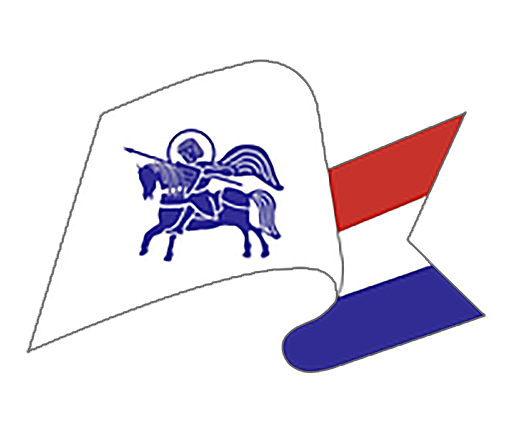
our competitive advantage
www.tankerska.hr
A place in the sun

CROATIA’S RISE TO BECOME A MAJOR PLAYER IN EUROPEAN TOURISM IS ONE OF ITS GREAT SUCCESS STORIES SINCE INDEPENDENCE. BUT WHERE WILL THE INDUSTRY GO FROM HERE?
Although at the time of the former Yugoslavia the Adriatic coast was a popular destination for low cost vacations for northern Europeans, the name of Croatia itself only became familiar internationally after independence. Nowadays, the country is attracting a more varied inflow of visitors than perhaps it ever expected.
The question asked in the Croatian tourism industry today is “where to now?” Having come this far, there is a general feeling that the current business model needs refreshing. The real focus of the country’s present tourism strategy is less about volume and numbers, and more about facing up to sophisticated challenges: attracting higher quality, higher spending tourists, extending the season from its current three months, and strengthening niches such as sail- ing, diving, business, cultural and health tourism.
“People do not like just to sit in the sun next to the sea anymore – they demand more activity, more entertainment,”
says Tonci Peovic, Director General of Dubrovnik Airport.
-
read more...
In spite of the diversification of the local tourism industry, there is little doubt that the medieval walled city of Dubrovnik, a UNESCO World Heritage Site and the self-proclaimed “Pearl of the Adriatic”, will remain the leading attraction of the country.
However, there will be extensive opportunities for foreign investors to contribute to the changing face of Croatian tourism, not only in Dubrovnik, but also across a country that boasts history, nature and an increasingly cosmopolitan lifestyle. The government has made a range of incentives available, such as inexpensive cred- it lines to support private investors in the sector and to encourage greenfield investments in traditional coastal areas and elsewhere. In March, 2006 it adopted a program of support for the tourism sec- tor, which includes a working group that is preparing the privatization of some remaining state-owned companies.
“The task ahead of us is to complete the process of privatization”
says Bozidar Kalmeta, Minister of the Sea, Tourism, Trans- port and Development. “There are 17 hotels that still haven’t been privatized, and the completion of this process is a priority. It would be interesting for American investors to participate in the offers in this sector.”
The lack of availability of high quality accommodation has become a limiting factor to growth in tourist numbers and earnings. Croatia is now reacting to this problem: older hotels are being renovated to increase their quality, and new hotels are being construct- ed, led by a $88 million investment in the five-star Le Meridien Grand Hotel Lav in Split.
“Where we lag behind a little bit is in the quality of accommodation”
Kalmeta agrees. “We lack the five-star hotels, but we are in a better position in this respect year by year. Investments in the tourism sector are very large indeed, especially private investments. We are starting to have more and more luxury accommodation.”
The appearance of exclusive boutique hotels in places such as the island of Hvar that cater to an international mix of jet set- ters is part of a new trend that might catch on when the full potential of the country’s different destinations is fully realized and properly marketed.
In the meantime, the process of finding new markets to complement traditional tourism seems to be taking hold, with Boeing 747s chartered to land in Dubrovnik from Japan this summer. US visitor numbers are also rising fast: “The potential is big,” says Marko Vojkovic, President of adriatica.net, a large online tourism agency and tour operator.
“Last year we had 144,000 Americans in Croatia, representing a 33% growth.”

Vojkovic adds that, apart from some cruise ships in Dubrovnik, US tourism is still small because major tour operators in the US are not offering Croatian products. His agency wants to bring American tourists over for longer visits. “We see this as a major goal for us – to be able to bring the volume and to have direct flights from New York and other parts of the US,” Vojkovic says. “We provide the product and we will try to find a partner to share part of the risk and to set up the charter flights. We need, of course, a tour operator in the US that can bring volume in sales.”
Within three years adriatica.net aims to post 1 billion euros ($1.36 billion) in annual revenue and serve three million passen- gers per year, ahead of a possible public listing.
The trend for shorter stays is also adding to the pressure to increase direct flights to the country. Long-haul charter tourists will stay longer and spend more than northern Europeans on city or beach breaks. Peovic of Dubrovnik Airport is talking with Delta, USAir and Continental about direct flights arriving from the US for the first time since 1978.
“As travel costs are so reduced, we can offer a similar package to long distance travelers as we can to Europeans,”
Peovic explains.
“This is why we are carrying out so many actions to attract long-haul carriers. Our task is to tap into far markets and establish several connections.”
Dubrovnik is also taking an increasing share of the booming global cruise industry. Major investments are being made in this segment: over the next ten years, 15,000 new boat berths will be built and new marinas will be construct- ed. Most of the development, however, will go towards improving existing marinas, in order to minimize damage to the pristine coast that is the main attraction for yachting.
The tagline of the Croatian Tourist Board, “The Mediterranean as it once was” shows that it has learned from the mistakes that top destinations such as Spain and Greece made in the 60s and 70s. To attract more affluent tourists interested in niche markets, the country needs to balance the growth of accommodation and attractions with a judicious preservation of its natural and cultural assets.



